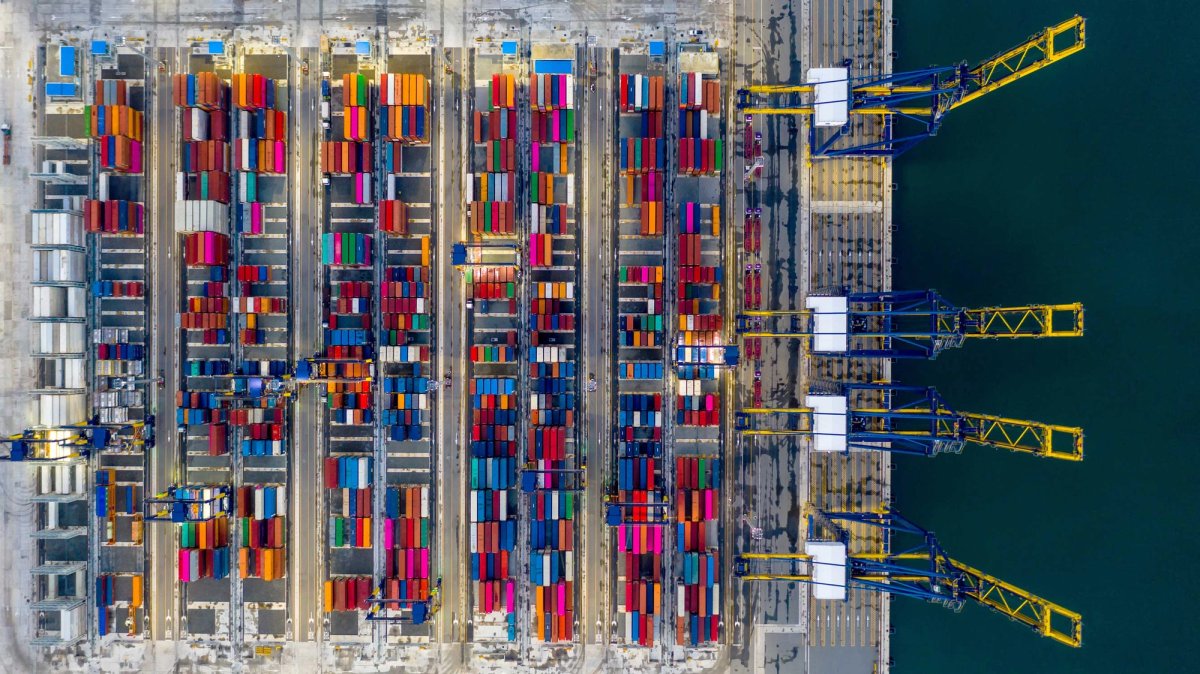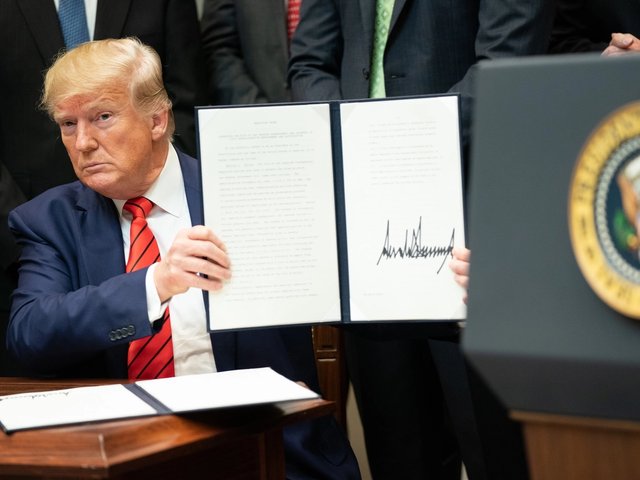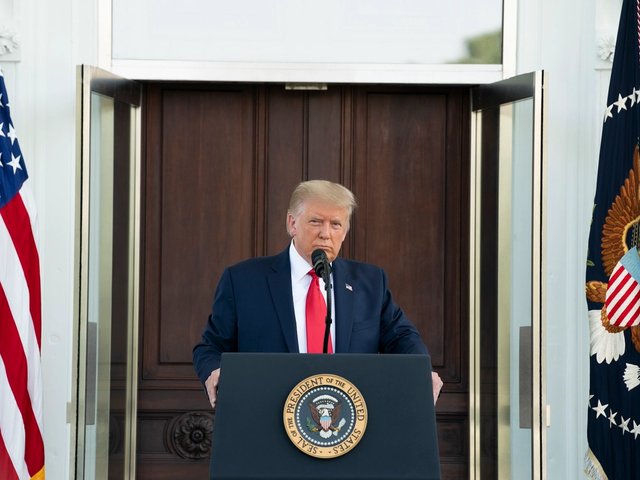Rising tariffs and regulations, geopolitical instability and extreme weather events are increasingly prompting collectors to move valuable items into secure tax-friendly freeports and free trade zones, experts say.
Alexandre Ducamp, the managing director of the Swiss logistics firm Natural le Coultre, which manages a large part of Geneva Freeport, says “we’ve seen a significant increase in clients over the past three years”. He dates this back to the start of the war in Ukraine, which “played a big role in more art collectors deciding to move their collections to freeports, especially the Geneva Freeport. Since that war began, the world situation has been getting worse, with several wars happening and unsteady politics and economies in many places.” President Donald Trump’s “Liberation Day” tariffs, announced on 2 April, are “just one more thing making things uncertain”, Ducamp says. “Putting valuable items in a secure and stable place like Switzerland offers a kind of safety that’s hard to find everywhere today … Given that the situation doesn’t appear likely to improve in the coming months, we don’t foresee any change in collectors’ desire to secure their art in stable countries like Switzerland.”
Sellers will retreat to ‘friendlier jurisdictions, freezing liquidity in Europe’
US tariffs
Fritz Dietl, the founder-owner of Delaware Freeport and the art shipping firm Dietl, agrees that uncertainty over tariffs and a general feeling of
instability are particularly benefitting freeports in neutral, tax-friendly Switzerland, such as Geneva, but also Zurich, Basel and Chiasso: “Switzerland, especially in times like this, is considered the safe haven.”
Dietl’s Delaware Freeport and adjoining free trade zone (FTZ), in which shipments can be held duty free, prior to customs clearance, are also experiencing increased interest, he says, as clients try to avoid or delay paying import duties on certain tariff-attracting items such as design, furniture and some antiques (of 10% on top of regular duties), anything containing steel or aluminium (which adds 10% or 25% depending on the object) and antiques or furniture of Chinese origin (at 7.5% for antiques and 25% for furniture; as of 14 May, the US and China have agreed to reduce tariff rates on each other for 90 days, including a 20% tariff tied to fentanyl). “Right now, as shipments are arriving in the US, there is absolutely an uptick in what we are placing into the foreign trade zone,” Dietl tells The Art Newspaper. Inquiries about placing items in the FTZ “have increased tremendously … we have these conversations now every week, if not daily, whereas before it was very rare to have a client who had the need for it”, he says, noting a “significant influx of property that now stays in the foreign trade zone”.
Clients are currently “extremely nervous and jittery”, Dietl says, citing one collector who purchased some Chinese antiques at Tefaf Maastricht in March but has since cancelled the purchase due to the extra import duty announced by President Trump in April. “We have clients who have imported some high-end design furniture, purchased before those tariffs came into place, which has cost them $200,000 in import duties.” He adds that the trade in Chinese works of art has “pretty much come to a standstill”, tracing this back to when lower tariffs on Chinese goods were first introduced during Trump’s first term in 2019.
Despite all this, Dietl’s shipping company has not noticed US gallery clients pulling back significantly on what they are shipping to Art Basel this month—after all, if there is one jurisdiction in which to do business right now, it is Switzerland, for the reasons mentioned above. Dietl also adds: “If there’s one positive in all the mayhem that we’re going through, it’s that shipping costs are coming down—fuel surcharges are down because the oil price has gone down, air freight capacity is opening up because fewer packages are being sent around the world.”
Francis Petit, the director of the New York office of logistics firm Gander & White, agrees that while gallery shipments to Art Basel this month are largely in line with previous years, he is seeing many clients leave works of art in limbo. “A lot of them are choosing to store items they have bought in Europe, until the tariff situation is resolved—they’ve bought a piece from a Paris dealer or auction house, for instance, they ask them to store it until the tariffs have lifted, they hope,” Petit says. “They’re trying to hedge the situation by buying time. The financial pressure created by the tariffs have made buyers think, OK I’ll have it stored there or maybe in a freeport in Europe if I need to.”
Increasing EU regulations
Edouard Gouin, the chief executive and co-founder of another logistics company, Convelio, thinks that more problematic than US tariffs for the art trade will be the controversial EU import regulation 2019/880, which comes into force this month, requiring all cultural goods to have proof of export from their country of origin before being imported to the EU. “We had a few cases involving important private collections accumulated over multiple generations that lacked complete provenance documentation,” Gouin says. “Some collectors are actively exploring alternative jurisdictions for storage. The names are essentially always the same: Geneva, Luxembourg and Singapore freeports, or bonded warehouses in the UK.”
The regulation, Gouin says, will result in restricted supply as sellers “retreat to friendlier jurisdictions, freezing liquidity in Europe”. Freeports and bonded warehouse in non-EU jurisdictions (such as the UK, Geneva, Luxembourg and Singapore) will benefit from “a slight increase in storage and logistic needs from the top-end of the market”, he says—but they will also be subject to increased regulatory scrutiny.
Katalin Andreides, a partner at Andreides Law—a specialist art law practice based in Rome—says she has noticed some clients holding off on transactions in the face of current uncertainty. “Jurisdictions that might once have been perceived as safe havens for collectors to hold art collections in may no longer necessarily be perceived as such,” she says. “Increasing scrutiny by authorities, also in relation to certain disclosure requirements as to who owns what, are further undermining collectors’ confidence. It may be expected that more collectors are considering moving more artworks to freeports, if they can. European freeports have already been experiencing an increase in use as art collectors and dealers have been adapting to the new realities post-Brexit.”
Meanwhile another lawyer, Till Vere-Hodge, the head of art and cultural property at the London-based law firm Payne Hicks Beach, says “the ability to collect art with confidence, and relative confidentiality, is being squeezed from various different directions, which might be characterised as ideologically-driven”. This is due, Vere-Hodge says, to a pincer movement from an “increase in economic nationalism and mercantilist measures, such as tariffs and zero-sum considerations between nation-states” on the right, and, on the left, “more and more policy approaches to the art trade that are based on moralist ideals, rather than an understanding of what such approaches would mean in practice”. From both sides of the political divide, Vere-Hodge says, “the echo chambers of over-simplification appear bound to treat the art trade to yet more unintended consequences and badly thought-out rules”.
Extreme weather events
In the US another rising concern, particularly following the Los Angeles wildfires in January, is the threat of extreme weather exacerbated by climate change. Rosemary Ringwald, the head of art planning at Bank of America Private Bank, says she has seen “an expansion of storage facilities offered to store art and collectables in fire-safe, temperature-controlled, high-security locations”. However, she warns clients to be mindful of sales and “use” taxes when moving their art and collectables. “If they move art from one state to another, a ‘use’ tax might be triggered,” she says. “Currently, there are only five states in the US. with no sales or use tax: Oregon, Delaware, Montana, New Hampshire and Alaska.” Freeports can be a good option, Ringwald says, “but the freeport must be in one of the five states with no sales or use tax to avoid triggering the use tax”.

There has been an expansion of art storage facilities in fire-safe locations following the Los Angeles fires in January
Photo: Adobe Stock Photo/toa555
Given the severity of recent natural disasters, insurance costs continue to rise and it is almost impossible to completely protect a collection. “Few collectors I know moved their art when the Los Angeles wildfires started this past January, presumably because no one anticipated the extent of their impact, nor could they envision the rapid spread that caused so much destruction,” Ringwald says. “Going forward, I can only assume that collectors in areas prone to natural disasters will consider secure storage facilities for their most prized art and collectables.”





